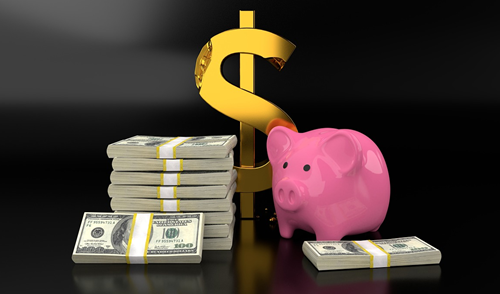Will Loan Rates Rise or Fall in 2025? Experts Share Bold Predictions
As 2025 unfolds, one financial question looms large for consumers, investors, and business owners alike: Will loan rates rise or fall this year? With inflation cooling in some regions but geopolitical tensions, central bank decisions, and digital finance innovations still in play, the trajectory of interest rates remains a key economic mystery.
To decode what might lie ahead, we spoke to economists, fintech leaders, and financial advisors who offered bold predictions. Their insights go beyond traditional forecasts and tap into structural shifts that may redefine lending as we know it.
1. The Tug-of-War: Inflation vs. Central Bank Policy
Loan rates often mirror central bank policy decisions, which in turn hinge on inflation trends. According to Dr. Lena Harcourt, a senior economist at the Global Financial Observatory:
“While inflation has shown signs of easing since late 2024, central banks remain cautious. Any unexpected supply shocks—especially in oil or agriculture—could trigger rate hikes.”
In 2024, many central banks, including the U.S. Federal Reserve and the European Central Bank, paused rate hikes but kept a “data-dependent” stance. In 2025, they face a delicate balance: cutting rates too soon could re-spark inflation, while keeping them high could choke economic recovery.
Bold Prediction: Loan rates will see a slight decline in Q2 and Q3 of 2025, but only if inflation remains subdued. Otherwise, they may plateau or even tick up again by Q4.
2. Housing Market Slowdown Could Nudge Rates Lower
Mortgage rates have been a source of pain for homebuyers in recent years. In many Western countries, 30-year fixed mortgage rates hovered between 6% and 7% in 2024. But that may begin to change.
Real estate strategist Monica Fields from UrbanPropertyWatch notes:
“High mortgage rates cooled housing demand across major urban centers. If central banks want to stimulate construction and home sales, they’ll need to encourage banks to offer lower loan rates.”
Already, some regional banks in Asia and Latin America have started trimming mortgage interest rates to revive borrowing. If the trend continues, expect similar strategies in more developed economies.
Bold Prediction: Mortgage loan rates could fall by 0.5% to 1% by the end of 2025 in competitive housing markets.
3. AI-Powered Underwriting and the “Personalized Rate” Revolution
Beyond macroeconomics, technology is transforming how loan rates are set. In the past, lenders used broad credit categories and national policies to determine rates. Now, thanks to AI and big data analytics, rates can be highly customized.
Fintech entrepreneur Rahul Mitra explains:
“AI-driven platforms can analyze real-time spending habits, employment data, and even social signals to assign ultra-personalized interest rates. That means lower-risk borrowers might enjoy better terms—even if average national rates stay high.”
This trend benefits digitally savvy borrowers, especially millennials and Gen Z, who use neobanks and fintech apps.
Bold Prediction: In 2025, expect to see a spread of over 3% between high-risk and low-risk personal loan rates due to precision underwriting.
4. The Crypto Factor: DeFi Loans Challenge Traditional Banks
One wildcard in the 2025 lending landscape is Decentralized Finance (DeFi). While still niche, DeFi protocols allow users to borrow against crypto assets without going through a bank. Rates are determined algorithmically and often fluctuate wildly, but they provide an alternative—especially in emerging markets.
Sasha Kim, a blockchain analyst, notes:
“DeFi lending platforms like Aave and Compound offer flexible, collateralized loans with interest rates that can be drastically lower—or higher—than traditional systems, depending on demand.”
While DeFi remains risky and is not yet mainstream, it’s pushing traditional banks to become more competitive.
Bold Prediction: Expect mainstream banks to offer crypto-collateralized loans by late 2025 in select countries, introducing entirely new rate structures.
5. Student and Auto Loan Rates: Stable But Not Cheap
Not all loan categories are created equal. For student loans and auto financing, experts predict relative rate stability, primarily due to government regulation and sustained demand.
Education policy researcher Amy Lo states:
“Governments are unlikely to raise student loan interest rates significantly in 2025, especially in election-sensitive years. But don’t expect massive relief either—most borrowers will continue paying moderate to high rates.”
Auto loans may see slightly improved terms if vehicle demand softens or electric vehicle (EV) incentives are expanded.
Bold Prediction: Student loan rates will remain between 4% and 6% for federal loans. Auto loan rates could dip by 0.3% if EV incentives spread.
6. The Corporate Credit Crunch: SMEs Will Pay More
While individuals may benefit from stabilizing rates, small and medium enterprises (SMEs) could face higher costs. Many banks have tightened credit conditions for businesses after recent financial institution failures and liquidity concerns.
According to Peter Lang, a commercial banker with over 20 years’ experience:
“Unless SMEs show strong revenue and digital adoption, they may struggle to secure low-rate loans in 2025. Risk-averse banks are pricing in more uncertainty.”
This is particularly tough for startups and cash-strapped businesses seeking to expand.
Bold Prediction: Business loan rates will diverge widely—top firms may secure sub-6% financing, while high-risk borrowers could face rates over 11%.
7. Regional Disparities: A Tale of Two Economies
One of the most underreported trends is the growing regional divergence in lending rates. While interest rates are tied to national monetary policy, local lending conditions can vary significantly.
In Southeast Asia, for example, digital microfinance platforms are offering ultra-low interest loans to rural borrowers—sometimes subsidized by governments or NGOs. In contrast, in parts of Africa and Eastern Europe, geopolitical instability is driving loan rates higher.
World Bank analyst Emmanuel Boateng says:
“Global averages mean little when local conditions are in flux. In 2025, we’ll see both extremes: sub-3% rates in some digital lending hubs and over 25% in conflict-prone areas.”
Bold Prediction: Loan rates will diverge globally, with regional gaps as wide as 20+ percentage points.
8. ESG Scores May Influence Rates
Environmental, Social, and Governance (ESG) scores are beginning to influence lending decisions. Banks increasingly use ESG metrics to adjust corporate loan rates—rewarding green initiatives and penalizing high-emission businesses.
Sustainable finance consultant Dr. Clara Yam notes:
“In 2025, banks with ESG mandates will offer preferential rates to borrowers with climate-friendly practices. It’s no longer just about credit history—it’s about carbon history.”
Expect ESG integration to spread to personal loans too, especially in eco-conscious regions.
Bold Prediction: By year-end, at least 30% of large banks will offer ESG-adjusted rates to business and mortgage borrowers.
Conclusion: 2025 Loan Rate Trends Will Be Complex, Not Uniform
Will loan rates rise or fall in 2025? The answer is not a simple yes or no—it’s a mosaic of trends, shaped by inflation, innovation, risk assessment models, and global geopolitics.
For borrowers, the key takeaway is clear: your personal interest rate may diverge sharply from national averages depending on your financial health, digital profile, ESG alignment, and even your geographic location.
Final Thoughts: How to Navigate 2025’s Loan Landscape
- Shop around – Rates can vary dramatically across lenders, especially in digital platforms.
- Improve your credit health – Better scores now translate into lower AI-adjusted rates.
- Consider alternative lenders – Fintech, DeFi, and peer-to-peer platforms may offer better deals.
- Go green – If you’re a business, sustainability investments might lower your borrowing cost.
- Stay informed – Loan rate movements in 2025 will be fast and fragmented. Keep an eye on central bank updates and fintech innovations.
In a year where old rules are being rewritten, knowledge and adaptability will be the best interest-savers of all.


